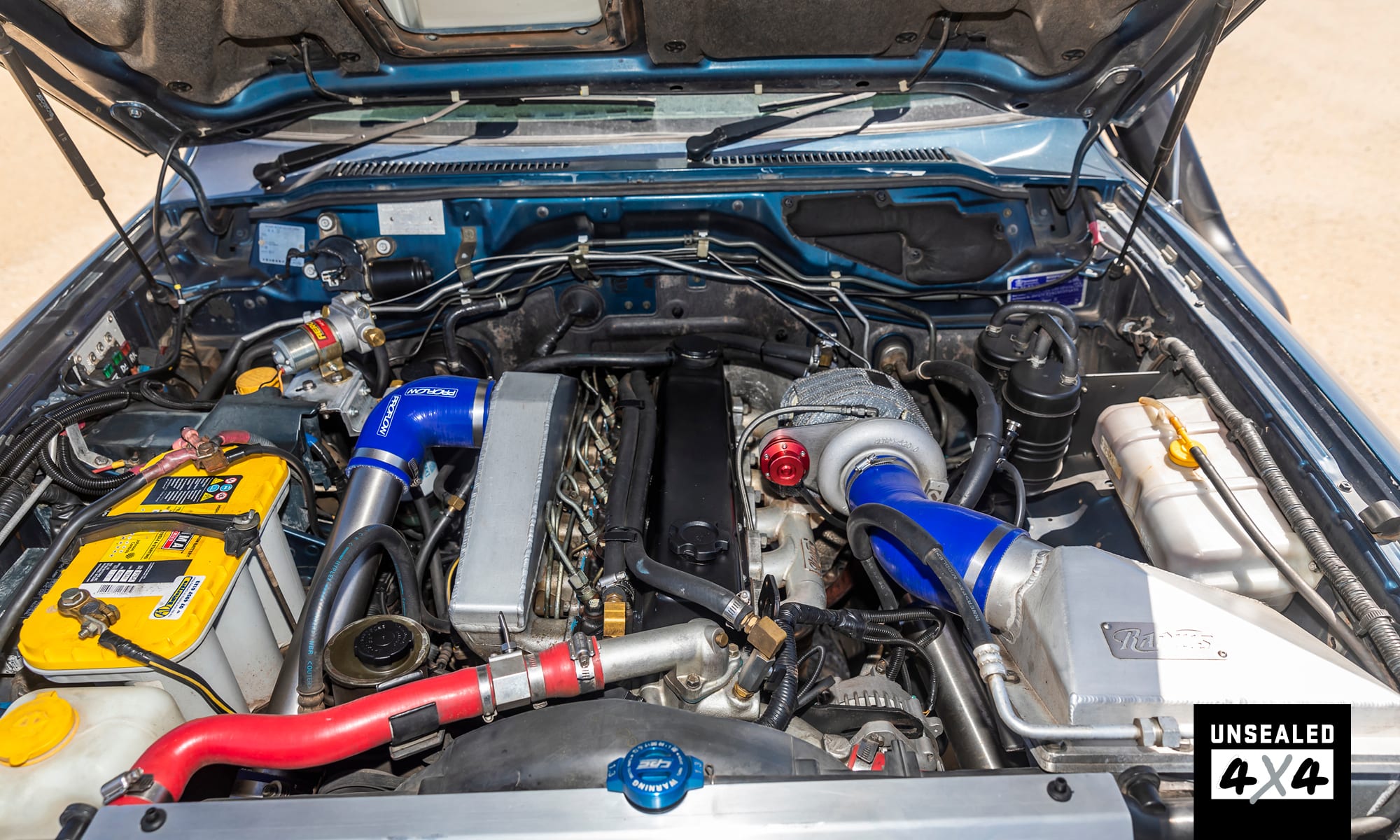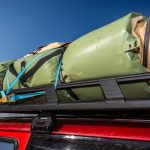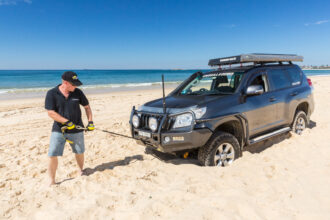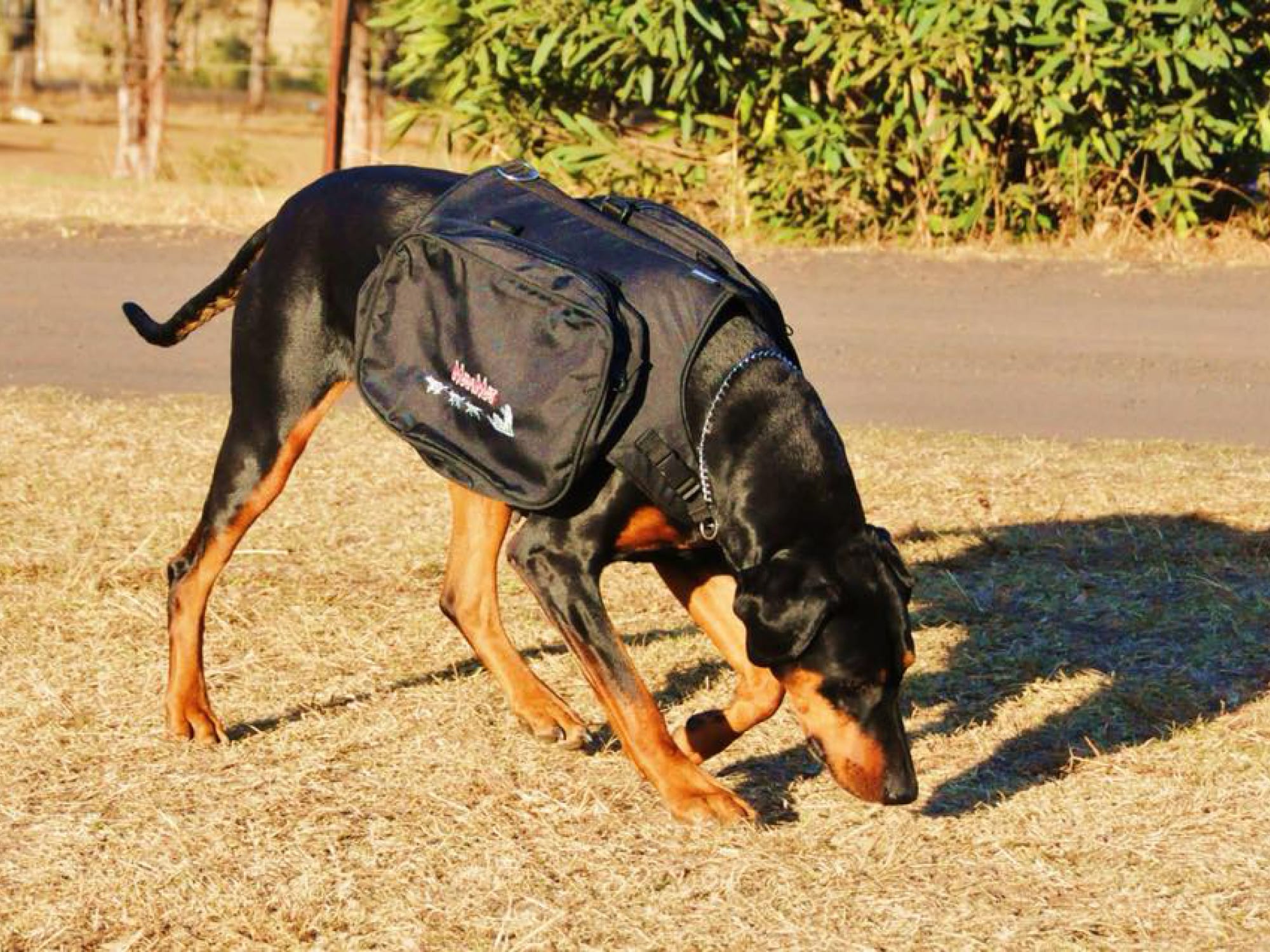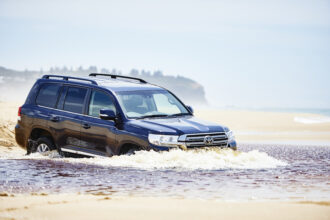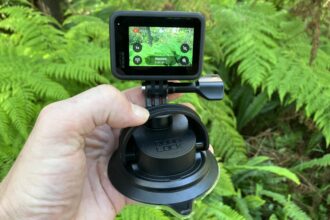We bring you nine ways to keep your TD42 from boiling itself to death, and a couple of things you’ll read on the forums that just don’t work!
Words and Images by Wes Whitworth and Thomas Rolleston
TD42s have gained a reputation for boiling at the first sign of soft sand or the first warm day in spring. Aptly named ‘The Kettle’, we recently caught up with a bloke to shoot his TD42-powered Patrol as a custom, and despite having the world’s greatest ‘Cowboy Tune’ and giving it all of the berries, three jandals and trying to push the loud pedal through the fire wall, all in soft sand no less, we couldn’t get it above 90°C (on a 36°C summer day, no less).
CLICK HERE TO READ THIS ARTICLE IN OUR FREE DIGITAL MAGAZINE
The bloke in question, who really needs no introduction if you’ve been around any TD or mechanical diesel social media pages, is known as a bit of a wizard when it comes to the powerhouse kettles. Thomas Rolleston has run RMS Performance Engineering up in Mackay, Queensland for around five years, had more TD42s than you can poke a stick at, and has been tinkering with them for over 15 years now. So when it comes to getting a TD42 to run well, he’s the bloke to talk to. So without any further ado, we go over his top nine tips to keep your TD42 from boiling.
MAINTENANCE!
The big, and apparently not so obvious one: maintenance of the cooling system. Check the radiator – is it blocked? Are 90% of the fins bent over? Does it have a pin hole or slow leak? How is it flowing? What about the viscous hub fan, can you easily turn it by hand when it’s hot (if you can, it’s not working). Are there any coolant leaks in the system at all? Even a dribble at a hose, thermostat housing, or the water pump? It’ll stop your system holding pressure and lowers your boiling temp. When was the last time you changed the coolant? Besides the corrosion inhibiting properties dying after a few years, it’s not nearly as efficient in keeping things cool. Maintenance should be your first port of call.
AIR FLOW
Got a pair of hoooge spotties on your bull bar? Obviously, this will limit how much air goes through the radiator, and how much gets deflected over or under the bull bar. What about a high-mount winch and control box? Or a custom full plate bull bar that only has a 200mm gap above it to let air through a 600mm high radiator?
From factory, there was also a piece of foam that sat between the radiator and radiator support panel, stopping air from escaping before it got through the radiator. There’s a bloody good chance that this has perished, or just not been put back in when someone has worked on your TD in the past. Tom had these covers made up that take care of the long-gone bit of foam, and get the air flowing back where it should be.

LOWER AIR DAM
Speaking of air flow, did you know that GUs came with this rather odd-looking air dam in front of the diff? They were plastic, and essentially the first thing to get smashed to pieces when proper wheeling. They forced the incoming air down, which in turn created a low-pressure area that would suck air from the engine bay out under the Patrol. Chances are you’ve not got one anymore (hell, I’ve never actually seen one in the flesh), however, a flap of conveyor belt (or rubber matting of your choice) bolted up to a lump of steel mounted the same way, will go a long way to restoring the low-pressure area and extract the hot air. With putting any lift in the Patrol, you’re going to want a longer air dam to put it back in spec (two-inch lift = two-inch longer flap). But getting something, anything, in there is going to help. That said, Thomas has just had full steel replacements made up, that are rather close to the factory plastic job.
UNDERSTANDING COOLING SYSTEMS AND PRESSURISATION
From factory, Nissan states 118°C as safe working temp for the TD42. Despite being well over 100°C, it’s still not boiling at that stage. This is due to the system being pressurised, which raises the boiling point of the coolant/water mix. So after you’ve made sure there are no leaks in the system, the next thing to look at is your radiator cap. First off, make sure it works, the bottom of it moves as it should, and the seal is in good nick. If the seal is shot, your cooling system won’t pressurise, and we’re back to square one.
Also worth looking at is that you have a 1.1 bar rated cap, not a 0.9 bar. That’s the pressure it will allow before it vents to your overflow – a touch more pressure in a 1.1 bar cap will stop it venting (and boiling) sooner. The issue here is not so much the temperature, but the boiling of the coolant – a boiling system creates air bubbles/pockets of air that do not transfer heat nearly as well as liquid. The metal components will then expand at different rates which will in turn crack/warp heads, et cetera.

COOLANT VS WATER WETTER
Coolant keeps things running as they should, in the moderate climate areas of Australia. But do we really need the anti-freeze properties of glycol (we don’t see snow in any major city in the country), or is there a better option? Once you’re getting towards boiling, as we said above, it’s the air pockets that boiling creates that causes issues.
Enter ‘Water Wetter’. If you’ve spent time in a local fire brigade, you’ll be aware of a type of ‘foam’ they use in bushfires that is a ‘wetting agent’. It works by removing a lot of the surface tension of the water, so it won’t create water drops, but a film that coats everything. Water wetter coolants do essentially the same thing. It makes for much better heat transfer then glycol-based coolants from cold to running temp, and stops the water from creating air pockets and bubbles by drastically reducing the surface tension of the water in your radiator. The water wetter is also a corrosion inhibitor by nature, so you’re not compromising anything.

GEARING AND PRESSURES
If you go up in tyre size, changing up the gearing really does make a difference. Bringing the final drive ratio (diff gearing) up from factory 3.9:1 on a TD42, to 4.375:1 (found in ZD30 Patrols) will bring your revs up a touch, and your temps down. Once you’ve gone up in tyre size, from factory if you go to 35s, running the 4.375:1 will take revs at any given speed back to factory.
This means the TD doesn’t have to work as hard to get moving or maintain speed, and a slightly higher RPM will increase the speed of your water pump, fan and oil pump, plus you’re not loading the engine up as much as you would be with a lower RPM. Same goes for tyre pressures. Being underinflated increases your rolling resistance, and everything from your engine to your diffs need to work harder to turn the rubber.

THERMOSTAT
The thermostat mostly comes under maintenance, but, well, Nissan kinda screwed the pooch with this one. The OEM thermostat on the TD is a touch shorter than it really needs to be, so it will only seal off the bypass valve once you’re upwards of 110°C. So unless you’re nudging temperature redline, there will always be some coolant that is going to just keep doing laps around the engine, and never actually make it to the radiator. Thomas has a replacement in stock that’s long enough to sort this issue out. These are perfect for just about anyone who doesn’t live on Mount Hotham.
OVERKILL IS A THING…
At least when it comes to volume and flow, it is. Your coolant needs to spend time in the radiator for it to be cooled down, so having the world’s angriest water pump, with an electric in-line pump pushing water around is going to be counter-productive. Same too with a giant radiator; think of it this way, try cooling down a bucket of water, then a cup of water… That said, have the right radiator for the job. If you’ve just lobbed a TD42 in your ZD30-powered Patrol, make sure your radiator is up to the job. No cowboy tunes … LOL jokes!
Turning the fuel up isn’t going to cook your TD42, so long as it’s done properly, and at a maintainable level. You’re going to want to keep an eye on your AFRs (air fuel ratios), as well as EGTs (exhaust gas temperatures) when adding fuel. You’ll also want to be able to match it with boost; just winding up the fuel screw without a look in to the boost compensator or boost levels, isn’t going to be ideal. We can’t stress enough that, whether you’re going for a ‘Cowboy Tune’ or you really want to bury your TD42 with a ‘safe tune’, make sure you see a tuner who knows what they’re doing, has the reputation as a solid tuner, and all the right equipment to do the job. Having the right accompanying mods (like exhaust, intercooler, dump pipe, and airbox/intake) will always help.
Backpressure is not your friend! Or if all else fails, just LS the bloody thing … I feel dirty having to write this, but going down the LS path has seen a lot of folks get decent (we use that word loosely) economy, and mountains of power, with an engine that you can easily keep cool, and you see LS engine conversions driving around all the time, just waiting to be crashed. That said, an LS will cook just as well as a TD if it’s not done properly. With that in mind however, Unsealed 4X4 will not be held responsible for your mates giving you grief for putting a petrol donk in your mighty diesel-powered Patrol!
WHAT DOESN’T WORK…
Aswe’ve touched on previously, lobbing a hooooooooge friggen radiator into the Patrol probably isn’t going to help. Same too for a super-duper, high-flow water pump (unless you’ve got that much corrosion in your system you need one just to get the coolant flowing!). High-flow thermostats will also cause issues, in that the water actually needs to be in the radiator for it to cool down. cycling the coolant too quickly will limit the amount of heat transfer you’ll get out of your TD. So besides opening up when the TD hits running temperature, the thermostat’s second job is to control coolant flow.
If you don’t have a top mount, you’re not going to need a bonnet scoop. Not to go too far into the aerodynamics of the Patrols, having a scoop up top for no reason (let’s say you’ve gone front mount instead), is going to severely screw with how the air flow out of the engine bay works. If you do happen to have a top mount, make sure your scoop’s hole in the bonnet is no bigger than your intercooler. You want every bit of air being forced through the cooler, not around it. A bit of foam around the cooler can help the scoop hole seal around the cooler, ensuring all the cool outside air is going through it.
HEADING TO THE CAPE IN A TD42?
Should you be planning to head up to the Cape this year with a TD powering your vehicle, Thomas has said he’s more than happy to run his eyes over any TD that cruises past his workshop in Mackay on the way, to make sure she’s running cool, and as well as she can. Click here to get in touch with Thomas on the RMS Facebook page. Just drop him a line, and let him know when you’ll be stopping by. Yep, this is a shameless plug for Thomas, as without him and his rocking horse sh!t, broken kettle of a TD42, we’d never have been able to put together this yarn. Before taking his ‘work truck’ out for a custom shoot, I didn’t think having a TD42 that didn’t boil on sand was even a thing. So thanks, bud!


